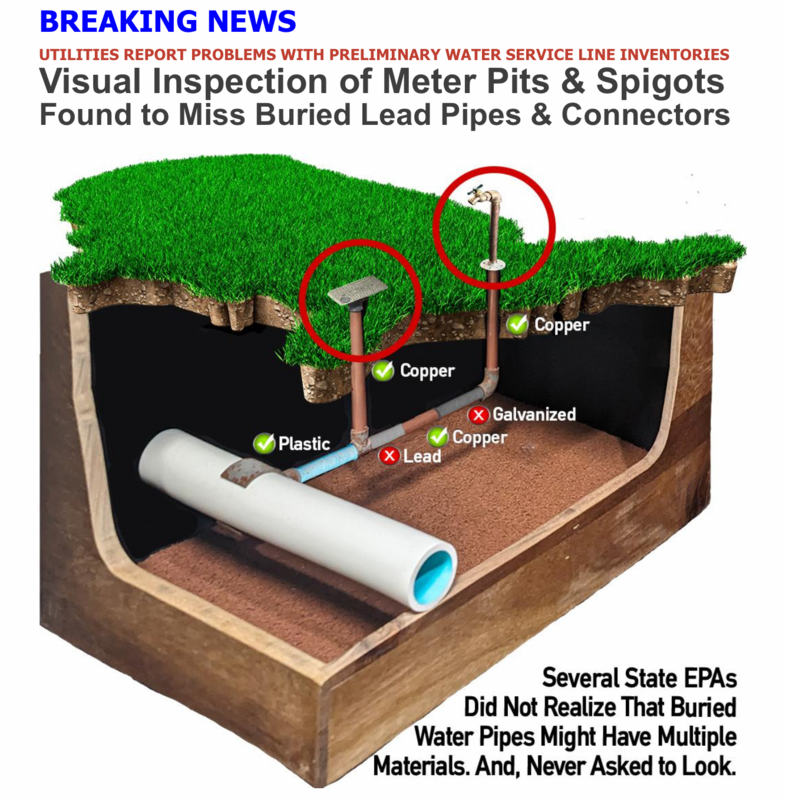Visual Inspection of Meter Pits & Spigots Found to Miss Buried Lead Pipes & Connectors
Published on by Water Network Research, Official research team of The Water Network in Case Studies

NEXT STEPS: Determine UNKNOWN Pipe Materials and Verify Original Service Line Inventory Submission
Potholing & Visual Inspection? NO..
⛔️ Unable to confirm whether Galvanized, Copper or Plastic pipes has Lead.
⛔️ LCRI requires mandated customer notification and water flushing before water reuse.
⛔️ Only allows 6-18 inches of visual inspection of pipe; potentially missing lead segments.
⛔️ Unable to detect multiple pipe materials, fittings, or connectors with lead.
⛔️ Additional verifications & testing may be required to certify lead-free homeowner pipe.
⛔️ Most expensive and disruptive method.
⛔️ Least accurate.
Electrical Resistivity - SWORDFISH? YES..
✅ Identifies multiple pipe materials in a single pipe - Copper, Galvanized, Plastic, & Lead.
✅ Confirms lead particles to confirm if Galvanized Requiring Replacement.
✅ About 45 minutes, start to finish, including flushing in accordance with AWWA C810-17.
✅ Cable length of 80ft. Much better than 6-18 inches.
✅ Able to test pressurized pipes (meter-to-main) and unpressurized pipes (meter-to-home).
✅ Least cost. Averages 1/20th of the cost of potholing.
✅ Most accurate. Able to certify water services as Lead-Free. EPA calls electrical resistance testing "only commercially available innovative solution that finds lead."
Taxonomy
- Pipes Design
- Utility Pipe Network
- Pipeline Rehabilitation
- Pipes and Pipelines
- Pipes and Pipielines
- pipeline leak detection
- Pipes and Pipelines
- Pipe Products